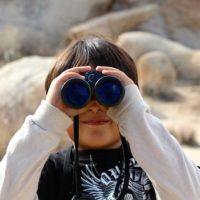I returned home recently after two wonderful days undertaking a learning review in a welsh medium school in North Wales. You might think sitting around in lessons all day watching students learning would be easy, but spotting which learning behaviours they are employing and how their teachers are stimulating this to happen always leaves me exhausted. And when the conversations are all in Welsh, that is even more the case !
The school chose to look only at year 7 and year 10, and I observed 16 half-hour learning episodes in total, across most areas of the curriculum. I have already started to work on Building Learning Power with a group of teachers in the school, and I was accompanied by one of those teachers during each observation. For them it was a chance to look at a lesson through the lens of student learning, and for me it meant I had an interpreter/translator.
The reaction of these teachers was interesting. Comments included:
- I will never look at a lesson the same way again.
- I can use this approach to analyse my own lessons.
- I have not been in a maths lesson since I was at school. How interesting to see what they do nowadays.
- We have got lots of great practice here, but because I only observe within my own curriculum area I am completely unaware of the good stuff that is happening in my own school.
- How amazing to see the kids that I teach, in other subjects.
- How do kids manage to navigate their way through so many lessons with differing expectations in the course of just one day? I really need to do a pupil pursuit to understand how it feels to have 5 lessons in 5 different subjects with 5 different teachers in one day.
Let’s unpick just the first one – ‘I will never look at a lesson the same way again’. Which, of course, begs the question, how do you look at lessons now?
Lesson observation has a turbulent history. Done well such observations are rooted in the philosophy that ‘I am interested in you as a developing professional and how I can support you to improve further’. Done poorly the philosophy is ‘You have abilities as a teacher and I am here to judge them’. How ironic that some schools who understand AfL and the impact of comment-only marking still like to ‘grade’ lessons! Even Ofsted, in whose name such lesson observations are sometimes undertaken, are moving rapidly away from such a simplistic approach. Whatever the underlying philosophy, and in this school it is very much about the developing professional, both types of observation focus primarily on what the teacher does or does not do.
So how is a learning review type observation different? What is the new ‘way’ of looking at a lesson?
When conducting a learning review, I seek to identify which learning behaviours students are being enabled to use. So I have in my mind questions like ‘Are the students attentive to detail?’, ‘Are the students able to work well with their peers?’, ‘Are the students monitoring their own progress?’, ‘Are the students displaying curiosity?’. In total I am probably on the lookout for 25 or so such behaviours. But note – each one begins with ‘Are the students . . . ?’. No sign of ‘Does the teacher . . . ?’
Such reviews do not, however, completely ignore the teacher. I am also on the lookout for how the teacher is enabling these behaviours to take place. Not whether, but how. For example I was in a sensational year 7 English lesson and was able to say that towards the end of the lesson ‘Students were enabled to distil what they had learned and what they still need to learn’. The way in which this was enabled was simple, applicable across all curriculum areas and one of those really neat ideas that all teachers could build easily into their repertoire. Identifying teacher behaviours that activate such learning behaviours is always positive as I am linking how teachers are behaving in order to create positive learning behaviours in their students.
The analysis becomes even more powerful once the profile for individual lessons is ignored, and the focus turns to the 25 learning behaviours, taken one at a time. For example, consider attentive listening. If in almost all of the observed lessons students were able to listen attentively to their teachers and peers, we get a different picture of learning from a school where this happens in around half of the observed lessons. In the former the conclusion is that attentive listening is an established facet of the classroom culture throughout the school. In the latter, the conclusion is that students can listen attentively when enabled, but that this is not yet a consistent feature across the majority of classrooms.
Reviews over time allow a school to track shifts in student learning behaviours, so enabling them to monitor the impact of the interventions they are making to improve learning. Might you perhaps find a learning review helpful, whatever your stage of development ?


No comments yet.